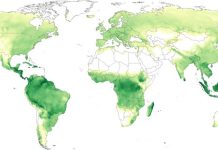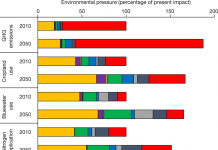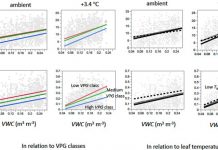【土壤肥力质量空间模拟的不同方法比较】Mingkai Qua Weidong Lib Chuanrong Zhangb Yongcun Zhao *c Biao Huangc Weixia Sunc and Wenyou Huc. Comparison of Three Methods for Soil Fertility Quality Spatial Simulation with Uncertainty Assessment. SSSAJ Vol. 77 No. 6 p. 2182-2191
Abstract
Spatial information of soil fertility quality is crucial for sustainable agriculture management. This study compared three methods based on sequential Gaussian simulation for spatial simulation of soil fertility quality index (SFQI) with uncertainty assessment through a case study in Hanchuan County China. These methods are different in data utilization and simulation procedure: Method 1 first calculates SFQI sample data from the sample data of soil fertility indicators and then simulates the spatial distribution of SFQI with incorporation of land use information; Method 2 is similar to Method 1 except that land use information is not used; and Method 3 first simulates soil quality indicators using their sample data and then derives each SFQI realization from randomly grouped realizations of different soil quality indicators. Validation showed that Method 1 had the best performance in optimal prediction in terms of correlation coefficients between measured and predicted data global prediction errors (mean error [ME] mean absolute error [MAEE] and root mean square error [RMSE]) and uncertainty modeling (accuracy plots and goodness statistic) and Method 3 was the worst. Methods 1 and 2 achieved respectively relative improvements of 32.27 and 12.72% in optimal prediction over Method 3. Probability maps estimated from simulated realizations using Method l showed that paddy fields generally had high quality grades while the fertility quality grades of dry farmlands were usually low in the study area. It is concluded that Method 1 may be a more effective method for SFQI prediction with uncertainty assessment and Method 2 may be adopted when land use information is unavailable.
【通过量化土壤颜色预测土壤C】Garrett C. Liles *a Dylan E. Beaudetteb Anthony T. O’Geenc and William R. Horwathc. Developing predictive soil C models for soils using quantitative color measurements. SSSAJ Vol. 77 No. 6 p. 2173-2181
Abstract
Rapid low cost methods to quantify soil C concentrations are needed to support local through global resource inventories. Color is a key indicator of many soil properties with a strong linkage between darkness and soil organic matter (SOM) making it an important indicator for soil taxonomy soi







